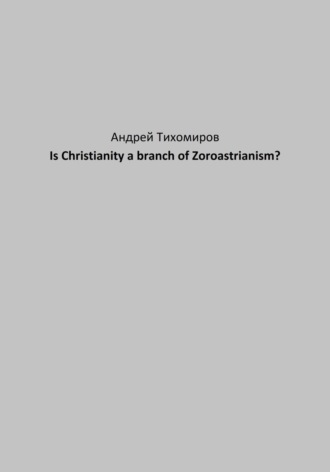
Андрей Тихомиров
Is Christianity a branch of Zoroastrianism?
Magi, or magicians, were called Zoroastrian priests, Mobeds in Persian. "When Jesus was born in Bethlehem in the days of King Herod, the magi came to Jerusalem from the east," says the Gospel of Matthew. From the east – from Parthia (Iran), where the main religion at that time was Zoroastrianism. They carried out a sacred mission, seeking to expand the influence of their religion among the Jews to fight against Rome. It is believed that by offering the newborn Jesus gold, frankincense and myrrh, the magi honored him as a king, high priest and sacrifice. But the same gifts symbolize the three dominant castes of Zoroastrian society and three types of varna (in Sanskrit, "Varna" – letters – "quality", "color", 4 main classes in Ancient India, the dominant position in society was occupied by Brahmins, Kshatriyas and Vaishyas, Sudras were a caste of inferior, dependent people). Similarly, in Zoroastrianism, the hwarna of the priest, the hwarna of the ruler and the hwarna of the warrior stood out. The symbol of royal charisma is gold, priestly – frankincense, military – myrrh, because warriors sacrifice themselves in the name of peace. At that time, various dualistic religious teachings were spread in Parthia (Iran), which viewed the world as a struggle between the good principle led by the god Ormazd and his spirits and the evil principle led by the god Ahriman and his demons (devas). These teachings associated with the name of Zarathustra have not yet received final formalization. Later they received a dogmatic form in the Avesta books recognized as sacred and in this form became known as Zoroastrianism. The religion of Mithraism (the god Mithra) is also connected with Iran, which in the first centuries of Christianity was a serious competitor to it. Myths, the appearance of Mithras himself, the cult of Mithraism largely coincides with mythology, the cult of Christianity. Suffice it to say that the birth of the god Mithras was widely celebrated in the Roman Empire on December 25. Initially, Christmas was celebrated on January 6, along with epiphany and epiphany, only in the IV century, when Christianity became the dominant religion in Rome, it was postponed to December 25 to displace the cult of Mithras. Syncretism was characteristic of the top of Parthian society, expressed in the fusion of local and Hellenic gods. In general, the Arsacid dynasty of Parthia (247 BC – 224 BC). In contrast to the later Sassanid dynasty, who were zealous advocates of pure Zoroastrianism. In the I century A.D., Zoroastrianism was reformed in Parthia, ancient texts were collected, and one of the oldest editions of the Avesta was created. During its greatest heyday, the Parthian Kingdom stretched from Babylonia through Iran to the Indus Valley. The Parthian kingdom ceased to exist around 224, when the Sassanid state emerged.







